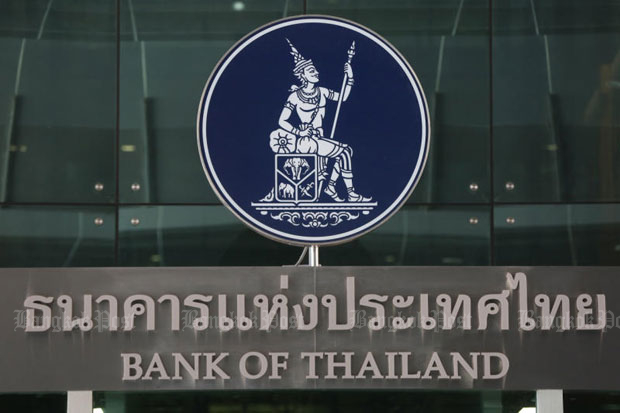
The Bank of Thailand has floated the idea of curbing the debt service ratio (DSR) by requiring lenders to change the computation method based on a borrower's overall debt repayment ability instead of each lending product as a means to control household debt and eliminate financial stability risks.
"The Bank of Thailand has talked with banks for a while about the DSR calculation method based on a borrower's debt repayment replacing the product-by-product basis," said central bank governor Veerathai Santiprabhob. "If new regulations to supervise DSR are needed, we will do it."
The central bank has studied instruments used by several countries to reduce household debt and found that many centred on a borrower's debt servicing ability rather than loan collateral.
Even though some local lenders use DSR as a key condition for loan approval, such guidance is not broadly applied by financial institutions, Mr Veerathai said.
Local financial institutions have focused on debt collateral rather than debt payment ability. For instance, auto lenders always approve loans to those who make high down payments, regardless of the borrower's DSR.
There are many measures to lower household debt, and the central bank will use a combination of policies from monetary policy to macro- and microprudential, Mr Veerathai said.
Thailand's household debt ratio climbed to 78.2% of GDP at the end of 2018 from 78% at the end of September, driven largely by consumer finance.
Accumulation of household debt, especially auto and mortgage loans, is a risk that the central bank is monitoring because it could hurt future financial stability.
Mr Veerathai has said repeatedly that financial fragility has increased as low interest rates for an extended period have prompted search-for-yield behaviour, particularly in savings cooperatives, corporate loans and mortgages.
Moreover, the central bank has conducted an examination of auto loan businesses after the strong growth of the financial product. But the risk posed by vehicle lending to the financial system would be smaller than that of mortgages because it has nothing to do with investment and speculative demand.
The central bank implemented loan-to-value curbs for housing loans that took effect on April 1.
The measures call for a minimum down payment for third and subsequent mortgages of 30% of the home price, while the minimum down payment for a second housing loan is 10-20%, depending on how long a borrower has made payments on the first mortgage.